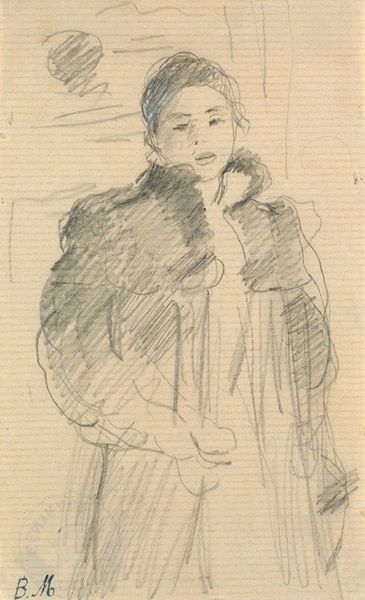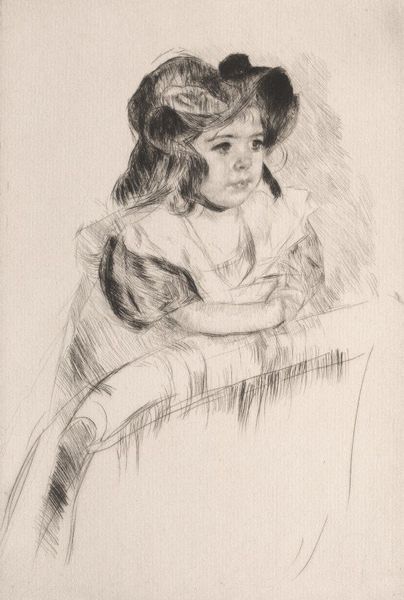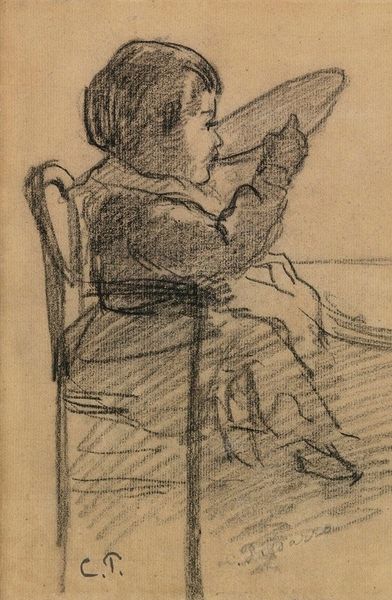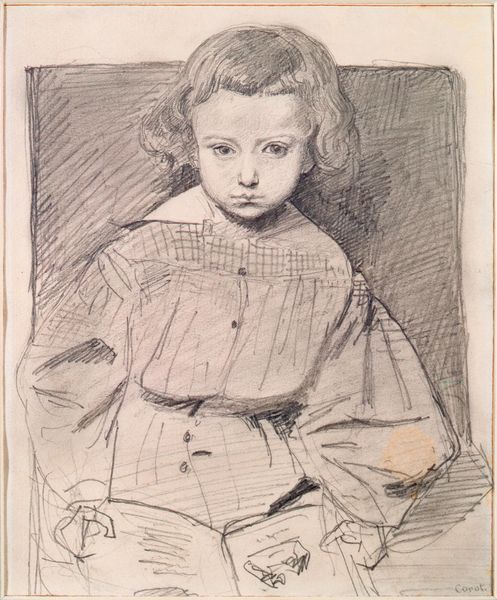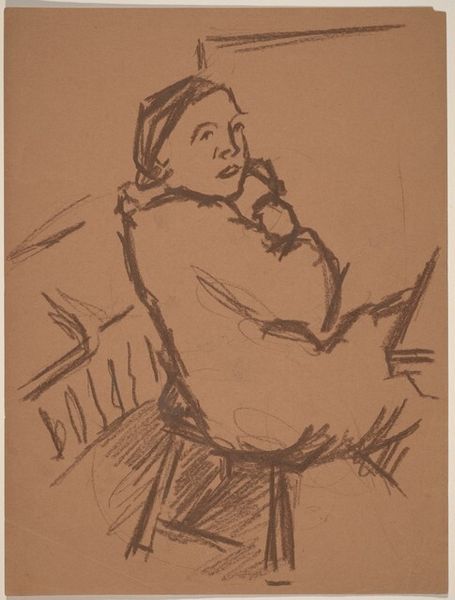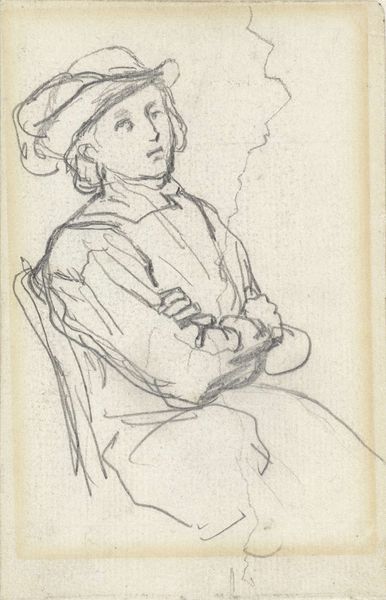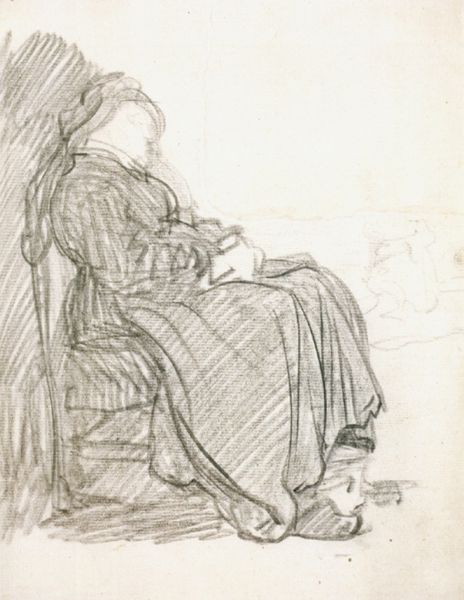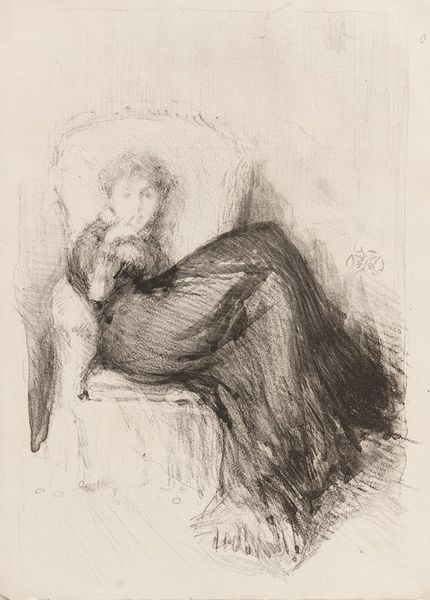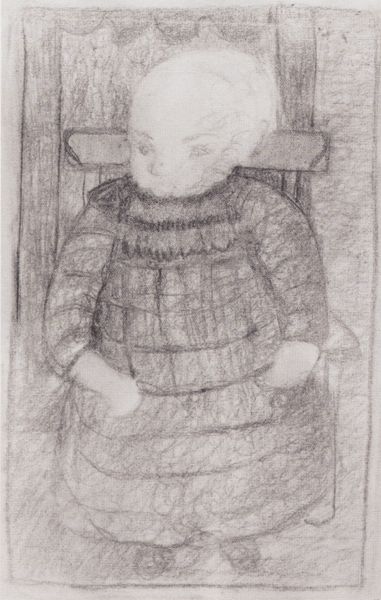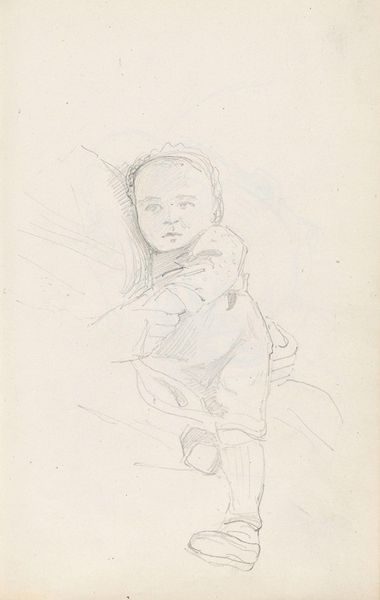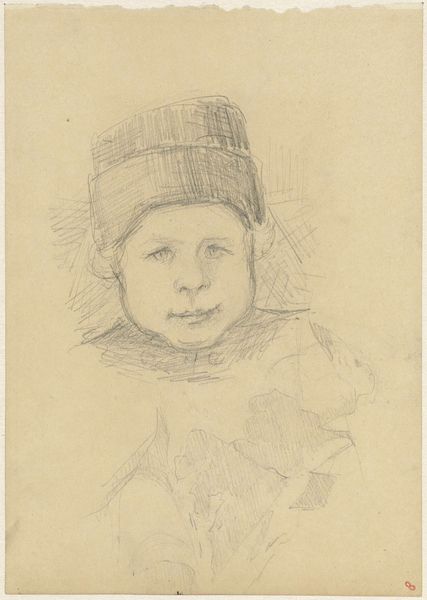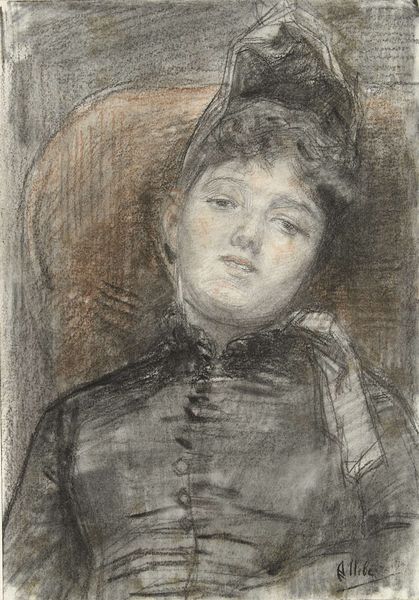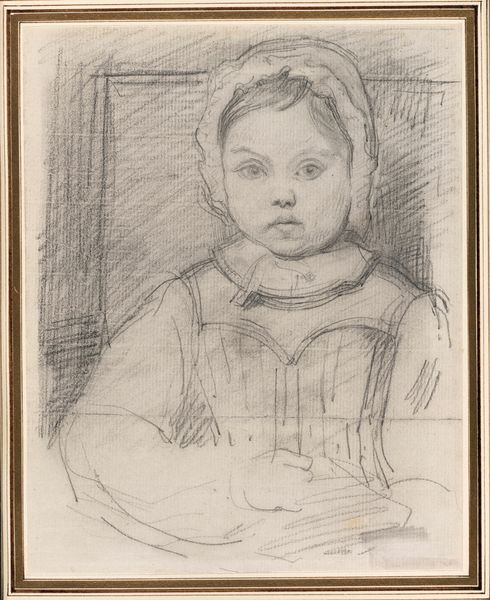
drawing, pencil
#
portrait
#
drawing
#
impressionism
#
figuration
#
pencil
Copyright: Public Domain: Artvee
Editor: This is "Child Seated on a Sofa," a pencil drawing by Mary Cassatt, dating to around 1883. The first thing I notice is its delicate, almost ephemeral quality. What do you see in this piece? Curator: I see a glimpse into the constructed world of childhood and gender roles within the late 19th century. Cassatt, often focusing on women and children, presents us with a young girl, formally dressed, perched on a sofa. But what's crucial here is to consider this image within the broader context of the male gaze and the limited representations of women artists during this period. What do you think Cassatt might be conveying by focusing on the inner worlds, the quiet moments of women's lives, often ignored by the dominant artistic narratives? Editor: So you're suggesting this seemingly simple portrait is a quiet rebellion? Curator: Precisely! Cassatt’s choice of subject and her intimate portrayal become a form of resistance. Her focus disrupts the patriarchal art world. Look at the child’s pose, the absence of a smile; there’s a thoughtfulness, a lack of performance for the viewer. Do you think that reflects the expectations placed upon young girls during this time, caught between innocence and the pressures of social performance? Editor: I can see that now. The loose lines also feel significant; they seem to capture a fleeting moment rather than an idealized representation. Curator: Absolutely. Cassatt’s impressionistic style allowed her to capture a sense of lived experience. Her drawing emphasizes the reality and everyday experience of women's lives in a world dominated by men. Editor: I never considered how a seemingly straightforward portrait could be such a powerful statement. Thanks for highlighting the social and political dimensions embedded in this drawing! Curator: It's these layers of context that make Cassatt's work so compelling. By situating art within broader conversations about gender, class, and representation, we can gain a much richer appreciation.
Comments
No comments
Be the first to comment and join the conversation on the ultimate creative platform.
